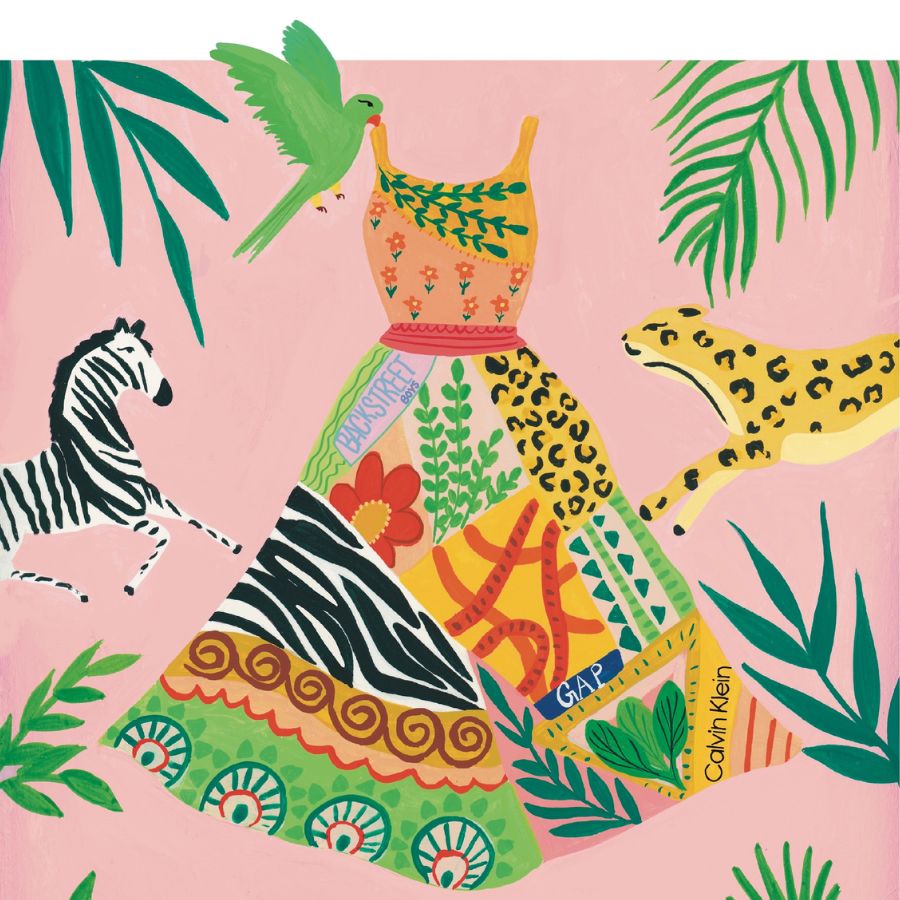Fashion
These designers are making the most of Africa’s fast fashion waste crisis

In the bustling marketplaces of East Africa, where vibrant hues of second-hand clothing are piled in heaps, lies a hidden account of globalization, economic survival and cultural transformation. Trade in mitumba – “bundles” in Swahili – is not merely a commercial enterprise but a phenomenon at the intersection of global consumer habits and local realities. As millions of garments flow to African shores each month, they bring with them contradiction and opportunity.
The legacy of “waste colonialism” in the fashion sector is undeniable. Marketed as economic aid, the export of second-hand clothing also allows Western nations to shed their surplus production and consumption. This practice dates to when Western attire was introduced to colonies under British rule and was later commercialized by American businessmen post-independence in the late 1950s, providing them a new revenue stream while offloading excess inventory.
Today, the appeal of second-hand clothing in sub-Saharan Africa, where nearly 34% of the world’s second-hand garments were shipped in 2021, is unmistakable. It offers millions of people affordable wardrobe options and underpins a vibrant informal sector that’s crucial for economic resilience. Research by Kenya’s Institute of Economic Affairs found that for the vast majority of Kenyan families, affordability is a key factor in their widespread preference for second-hand clothing. But it’s not just about cost savings. “They’re not only cheaper but also better quality than many new clothes made in China – and definitely more stylish,” says Josephina Mwasi, a shopper at the Memorial second-hand market in Moshi, Tanzania.

Yet this influx of Western garments – worth US$1.7 billion in shipments to sub-Saharan Africa in 2021 alone – presents a formidable paradox: while it energizes retail sectors, it’s widely believed to simultaneously suffocate local textile industries. A 2008 report by economist Garth Frazer highlights a stark decline of roughly 40% in local apparel production from 1981 to 2000 and correlates this with the rise of imported second-hand clothes.
While it’s tempting to attribute the drop solely to these imports, the reality is more nuanced. The crux of the matter lies in the domestic market, where higher production costs, coupled with persistent inflation, make locally produced clothes increasingly less attractive compared to second-hand ones and cheap new imports. Despite the challenges facing local manufacturing industries, Africa’s upcycled apparel exports – made with refashioned second-hand textiles – have shown remarkable resilience and growth.
“We’re not just the dumping ground. We have the potential to produce, we have the potential to create,” Ugandan fashion designer Bobby Kolade said in 2022. “Our capacity to redesign, reuse, upcycle and remake has developed into a culture and a visual language.”
Having interned for Balenciaga and Margiela in Paris and launched his own brand in Berlin, Kolade found himself disillusioned with the luxury fashion industry in Europe and returned to Uganda’s capital, Kampala. He founded his own clothing line, Buzigahill, taking second-hand garments imported into Uganda and transforming them into upcycled garments sold back to the Global North. Buzigahill’s slogan: Return to sender.


Meanwhile, innovators like Khumo Morojele and Klein Muis in South Africa and Rummage Studio in Nairobi are turning second-hand treasures into expressions of African identity, bridging the gap between tradition and avant-garde fashion. And in Ethiopia, SoleRebels, founded by Bethlehem Tilahun Alemu in 2004, crafts fair-trade-certified and vegan shoes from recycled materials like tires as well as indigenous plant fibres. Notably, their footwear is inspired by selate and barabasso shoes – traditional Ethiopian footwear with recycled tire soles historically worn by rebel fighters resisting Western colonization. “We’re not green because some bloke in marketing told us it was a good idea,” Tilahun Alemu told Le Monde, “but because this is how we make shoes in Ethiopia.”
Today SoleRebels is considered the Nike of Africa, employing almost 200 people.
Tilahun Alemu told Le Monde that the practice of circularity is deeply ingrained in African communities, predating its current trendy status. However, it’s hard to ignore that these innovators may be able to tackle only the tip of the iceberg when it comes to the mounds of second-hand imports flooding their countries.
Environmental impact and the shadow of waste colonization
Launched in 2015, advocacy group Clean Up Kenya was initially focused on the environmental impact of single-use plastic bottles and packaging, but its advocacy has now broadened. “We’ve also delved into textile waste – specifically, the role of plastics in second-hand clothing,” founder Betterman Musasia says. In 2023, Clean Up Kenya teamed up with the Changing Market Foundation to release Trashion: The Stealth Export of Waste Plastic Clothes to Kenya. The report casts a spotlight on how the global trade in used clothing often doubles as a conduit for plastic waste, dumping burdens on communities and ecosystems in recipient nations.
Despite international restrictions on plastic waste exports under the Basel Convention – and impending bans in the European Union – Musasia reveals a troubling finding: “Our research showed that over a third of the used clothing sent to Kenya is so low in quality that it essentially arrives as immediate waste.” Between 55,500 and 74,000 tonnes of textile waste a year (roughly 150 to 200 tonnes daily) end up in landfill, and many of these garments contain up to 69% synthetic petroleum-derived fibres, like polyester. When discarded in landfills, these materials degrade into microplastic particles that end up polluting the air and waterways.


“The Global North is using the trade of used clothing as a pressure-release valve to deal with fast fashion’s enormous waste problem. Clearing up the mess that the fashion industry has created and ensuring the sector is pulled onto a more sustainable track will require comprehensive legislation,” the report’s authors say.
Navigating the future
The debate over the fate of the second-hand clothing trade encapsulates the broader challenges of sustainable development and industrial evolution in Africa. The East African Community, an intergovernmental organization with six partner countries, has recommended banning second-hand clothing since 2016, originally aiming to phase out the trade by 2019. Rwanda took decisive action in 2018 by imposing high taxes on imports to deter trade, and in August 2023, Uganda’s president, Yoweri Museveni, announced a ban on all imports of used clothing.
Ugandan designer Kolada has pushed back against his government’s call for an immediate ban. “Painful as it is to acknowledge, second-hand textiles are a valuable source of tax revenue for our country. A ban is a vote for economic suicide,” Kolade wrote in The Guardian last year. Instead, he suggests making the Global North “accountable for its fast-fashion waste through the extended producer responsibility fund.”
Clean Up Kenya also says that “producers must be made financially responsible for the management and cost of end-of-life treatments of the products they place on the market.”
An integrated approach is required – one that includes government subsidies, infrastructural improvements, and investment in technology and education to strengthen the domestic textile-and-clothing-manufacturing industry.
As Africa navigates this landscape, it is clear that solutions must be as multifaceted as the challenges they aim to address, weaving together considerations of economy, culture and environment in a balanced and sustainable tapestry.
Shilpa Tiwari is the co-founder of Isenzo, a boutique firm that takes a systems approach to ESG, and the founder of No Women No Spice. She lives in Tanzania and Toronto.










